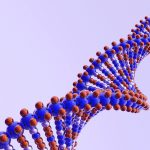 A team of researchers at the Commonwealth Scientific and Industrial Research Organisation (CSIRO), Australia, has identified an ancient gene that plays a key role in regulating the human body’s immune response to infection and disease. The discovery, published in the Journal of Biological Chemistry, could have intriguing implications for antiviral immunity, autoimmune disorders and cancer.
A team of researchers at the Commonwealth Scientific and Industrial Research Organisation (CSIRO), Australia, has identified an ancient gene that plays a key role in regulating the human body’s immune response to infection and disease. The discovery, published in the Journal of Biological Chemistry, could have intriguing implications for antiviral immunity, autoimmune disorders and cancer.
The newly-identified immune gene — named the chromosome 6 open reading frame 106 (C6orf106) — controls the production of proteins involved in infectious diseases, cancer and diabetes.
“Our immune system produces proteins called cytokines that help fortify the immune system and work to prevent viruses and other pathogens from replicating and causing disease,” said Dr. Cameron Stewart, a researcher within the Mitigating Invasive Species and Diseases Program of CSIRO Health & Biosecurity.
“C6orf106 regulates this process by switching off the production of certain cytokines to stop our immune response from spiraling out of control.”
“The cytokines regulated by C6orf106 are implicated in a variety of diseases including cancer, diabetes and inflammatory disorders such as rheumatoid arthritis.”
“The discovery helps improve our understanding of our immune system, and it is hoped that this understanding will enable scientists to develop new, more targeted therapies.”
The C6orf106 gene has existed for approximately 500 million years, but its potential is only now understood.
“Even though the human genome was first fully sequenced in 2003, there are still thousands of genes that we know very little about,” said Dr. Rebecca Ambrose, a former CSIRO researcher, now based at the Hudson Institute of Medical Research.
“It’s exciting to consider that C6orf106 has existed for more than 500 million years, preserved and passed down from simple organisms all the way to humans.”
“But only now are we gaining insights into its importance.”
Source: Sci-News.com

















